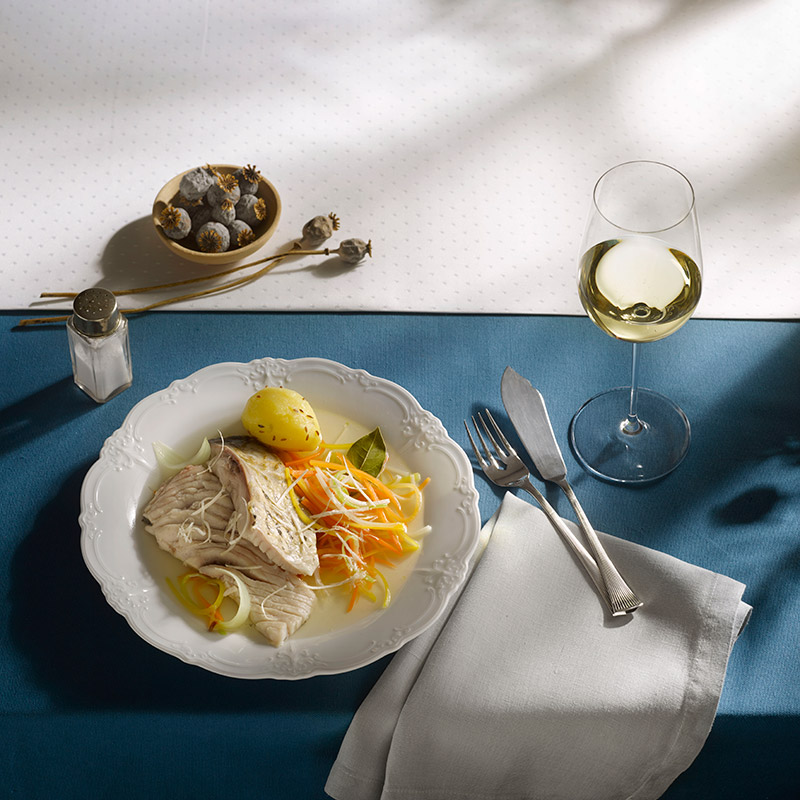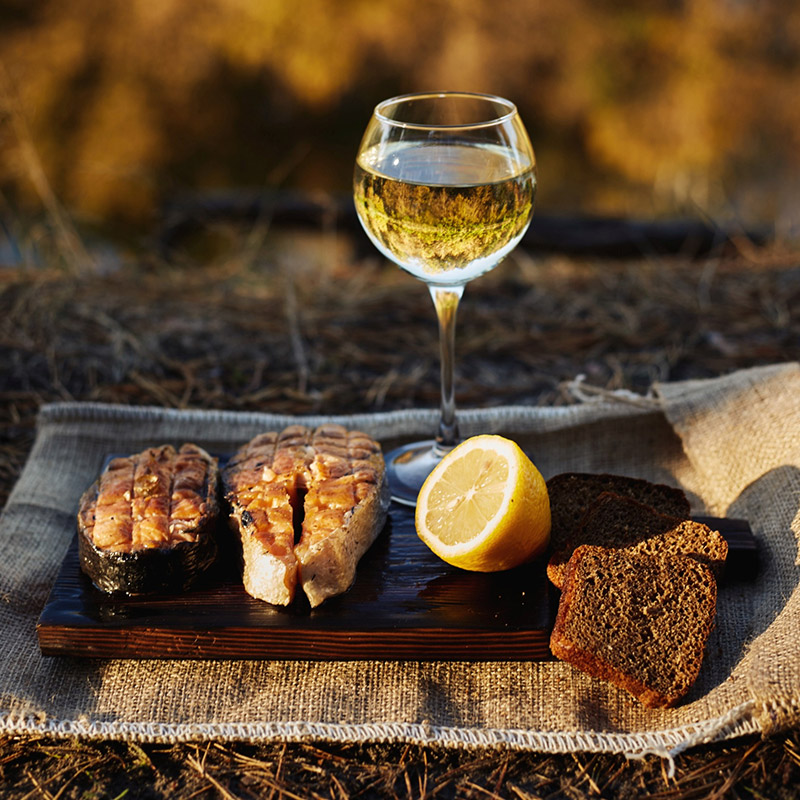Once upon a time there was an island, far away from the rest of the wine world. There were a few vines there, mostly Müller-Thurgau. But then, about 40 years ago, a person named David Hohnen came to a very specific bay on this island and started making wine. The bay was called Cloudy Bay, the island New Zealand and the grape variety Hohnen chose was Sauvignon Blanc. The rest is history.
In 1985, Hohnen presented his Cloudy Bay Sauvignon Blanc for the first time at tastings in Europe and the USA. The critics were thrilled. Because the wine tasted completely different from anything known from this grape variety. This usually came from the Loire and was rather sparse in style. Cloudy Bay, on the other hand, was - and still is - an easy-drinking piece of hedonism that tastes lavishly of gooseberry, lime, passion fruit and papaya.
 Top sommelier Maximilian Wilm (©Per Kasch)
Top sommelier Maximilian Wilm (©Per Kasch) © OeWM Blickwerk
© OeWM BlickwerkIt doesn't happen often in history that a single wine influences how a grape variety develops worldwide. It did back then. More and more winemakers around the world planted Sauvignon Blanc and imitated this fruity style from New Zealand. But there, too, the vineyards virtually exploded. At the beginning of the 1980s, there were not even 50 hectares, today there are more than 20,000. And more than 80 percent of the wine exported from New Zealand is Sauvignon Blanc.
Maximilian Wilm is a sommelier and operations manager at "Kinfelts - Kitchen & Wine" in Hamburg, and judging by his industry awards, one of the best in the country. Next year he will represent Germany at the Sommelier World Championship in Paris. He regrets somewhat how much the grape variety has changed from a fine food companion to an easy-drinking patio wine. Perhaps this also has to do with the fact that Sauvignon Blanc is not easy to combine with food. Wilm, at any rate, knows of no sommelier colleague who names Sauvignon Blanc as his favourite grape variety.
 © 123rf.com
© 123rf.comHis usual recommendation for accompanying food is simply: something with fish. The sommelier from Kinfelts ponders for a while on alternatives. "With New Zealand style, I'd immediately go for Asian cuisine," he finally says, recommending a Thai salad, for example: "There are peanuts, mango and passion fruit in it: all flavours that go wonderfully with the island's fruity Sauvignon Blancs."
The classics of the grape variety come from France and taste very different, more like flint and sparse spice. It's not "easy-drinking". "And that makes it hard to sell the wines," says Wilm. Moreover, at Sauvignon Blanc, the guest's taste has decoupled from the grape variety. He reports of guests who definitely don't want to drink Sauvignon Blanc, but order a bottle of Sancerre from him - the original form of this variety. The sommelier does not blame the guests, because the styles are too different.
If he pours a Sauvignon Blanc from the Loire, he resorts to what is probably the oldest trick in wine-food pairing: you drink wine from a region with food from the region. "Yes, that always works," Wilm says and laughs. "So take a goat's cheese, sauté it and maybe spread it with some birch honey." He also recommends these wines with vegetarian cuisine, but is cautious about meat. At most, he would let a chicken fricassee pass as an accompaniment to a meagre Sancerre.
Between these two extremes, Styria has established itself in the recent past. In the Austrian wine-growing region, winemakers press Sauvignon Blanc, which has also made a name for itself worldwide. "These wines are characterised by herbaceous spiciness and aromas of nettles. They rarely have such a kitschy fruit as in New Zealand," explains Maximilan Wilm. He likes the fact that the wines from there bring a portion of coolness with them due to the higher altitudes where the vintners in Styria plant the variety: "The vintners there are aware that you can reconcile both styles and thereby create something new."
"The wines from this region often have a bit of a melt, which goes well with fried chicken," he says. Alternatively, he recommends a Vogerlsalat (i.e. a field salad), possibly with potatoes, but definitely prepared with pumpkin seed oil. "Sauvignon Blanc can be very versatile, also in food accompaniment," says Wilm. However, it stands or falls with the style. "However, the grape variety as a whole is already more in the fish corner."
The area under cultivation of the variety is also growing enormously in Germany. According to current figures from Destatis, the vineyard area for Sauvignon Blanc grew by 177 per cent to 1,800 hectares in the period from 2011 to 2021. But character wines with edges and corners are rarely produced from it. "Customers want something different," says Wilm. "Fermented cool with pure yeast, fresh and fruity, and then available for 7.50 euros a bottle. That sells," he says and squirms a little when asked for his personal assessment: "As a sommelier, you have to write a wine list that the guest should like," Wilm answers, "so you can't avoid this grape variety."